Gabapentin
Synonym(s):1-(Aminomethyl)-cyclohexaneacetic acid;Gabapentin - CAS 60142-96-3 - Calbiochem;L-type Voltage Gated Ca2+ Channel Blocke, Gabapentin;Neurontin
- CAS NO.:60142-96-3
- Empirical Formula: C9H17NO2
- Molecular Weight: 171.24
- MDL number: MFCD00865286
- EINECS: 262-076-3
- SAFETY DATA SHEET (SDS)
- Update Date: 2024-05-30 16:33:02
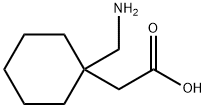
What is Gabapentin?
Absorption
Gabapentin absorption occurs exclusively through facilitated transport by the LAT1 transporter in the intestines. This saturable process results in oral bioavailability that is inversely proportional to the administered dose; for instance, a 900 mg/day regimen has an approximate bioavailability of 60%, while a 4800 mg/day regimen drops to about 27%. The time to reach maximum concentration (Tmax) for gabapentin is estimated to be 2-3 hours. Notably, food intake does not significantly affect gabapentin absorption.
Toxicity
The oral TDLo of gabapentin in humans is 2.86 mg/kg and the LD50 in rats has been found to be >8000 mg/kg. Symptoms of overdose are consistent with the drug's adverse effect profile and involve CNS depression (e.g. dizziness, drowsiness, slurred speech, lethargy, loss of consciousness) and gastrointestinal symptoms such as diarrhea. Management of overdose should involve symptomatic and supportive treatment. Gabapentin can be removed by hemodialysis - this may be of benefit in some patients, such as those with impaired renal function.
Multi-drug overdoses involving gabapentin, particularly in combination with other CNS depressants such as opioids, can result in coma and death - this possibility should be considered when managing overdosage.
Description
Gabapentin was introduced in 1993 in the UK and early 1994 in the USA as an adjunctive therapy in the treatment of refractory partial seizures and secondarily generalized tonic-clonic seizures. Although being a lipophilic analog of the neurotransmitter GABA, gabapentin appears to exert its anticonvulsive function by a GABA receptor independent mechanism, possibly involving the L-system amino acid transporter protein. Gabapentin easily crosses the blood brain barrier and exhibits a favorable pharmacokinetic profile with high tolerability. It does not interfere with the metabolism of other concomitant administered antiepileptic drugs, thus having a low potential for drug interactions. Studies are currently underway for the use of gabapentin as mono-therapy for the treatment of various seizures.
The Uses of Gabapentin
Gabapentin is an Amino acid structurally related to γ-Aminobutyric Acid (GABA), designed to cross the blood brain barrier. Used as an anticonvulsant.
Background
Gabapentin, a structural analogue of the inhibitory neurotransmitter gamma-aminobutyric acid (GABA), was first approved for use in the United States in 1993. Initially developed as an anti-epileptic medication for treating certain types of seizures, it is now also widely utilized for neuropathic pain. Gabapentin offers several advantages over other anti-epileptics, including a relatively benign adverse effect profile, a wide therapeutic index, and minimal metabolism, which reduces the likelihood of pharmacokinetic drug interactions. It is structurally and functionally related to another GABA derivative, pregabalin.
Indications
In the United States, gabapentin is officially indicated for the treatment of postherpetic neuralgia in adults and for the adjunctive treatment of partial-onset seizures, with or without secondary generalization, in patients 3 years of age and older. In Europe, gabapentin is indicated for adjunctive therapy in the treatment of partial-onset seizures, with or without secondary generalization, in patients 6 years of age and older and as monotherapy in patients 12 years of age and older. It is also used in adults for the treatment of various types of peripheral neuropathic pain, such as painful diabetic neuropathy.
What are the applications of Application
Gabapentin is a compound structurally similar to GABA that binds to voltage-sensitive Ca2+ channels
Pharmacokinetics
Gabapentin is an anti-convulsant medication that inhibits the release of excitatory neurotransmitters, allowing for its use against pathologic neurotransmission such as that seen in neuropathic pain and seizure disorders. It has a wide therapeutic index, with doses in excess of 8000 mg/kg failing to cause a fatal reaction in rats.
Gabapentin is ineffective in absence seizures and should be used in caution in patients with mixed seizure disorders involving absence seizures. Gabapentin has been associated with drug reaction with eosinophilia and systemic symptoms (DRESS), otherwise known as multi-organ hypersensitivity. This reaction can prove fatal and early symptoms such as fever, lymphadenopathy, and rash should be promptly investigated.
Properties of Gabapentin
| Melting point: | 162°C |
| Boiling point: | 314.4±15.0 °C(Predicted) |
| Density | 1.058±0.06 g/cm3(Predicted) |
| Flash point: | 9℃ |
| storage temp. | 2-8°C |
| solubility | H2O: 10 mg/mL |
| form | solid |
| color | off-white |
Safety information for Gabapentin
| Signal word | Danger |
| Pictogram(s) |
 Flame Flammables GHS02  Skull and Crossbones Acute Toxicity GHS06  Exclamation Mark Irritant GHS07  Health Hazard GHS08 |
| GHS Hazard Statements |
H225:Flammable liquids H315:Skin corrosion/irritation H319:Serious eye damage/eye irritation H335:Specific target organ toxicity, single exposure;Respiratory tract irritation H360:Reproductive toxicity H370:Specific target organ toxicity, single exposure |
| Precautionary Statement Codes |
P201:Obtain special instructions before use. P210:Keep away from heat/sparks/open flames/hot surfaces. — No smoking. P260:Do not breathe dust/fume/gas/mist/vapours/spray. P261:Avoid breathing dust/fume/gas/mist/vapours/spray. P280:Wear protective gloves/protective clothing/eye protection/face protection. P311:Call a POISON CENTER or doctor/physician. P301+P310:IF SWALLOWED: Immediately call a POISON CENTER or doctor/physician. P305+P351+P338:IF IN EYES: Rinse cautiously with water for several minutes. Remove contact lenses, if present and easy to do. Continuerinsing. P308+P313:IF exposed or concerned: Get medical advice/attention. P370+P378:In case of fire: Use … for extinction. P403+P235:Store in a well-ventilated place. Keep cool. |
Computed Descriptors for Gabapentin
| InChIKey | UGJMXCAKCUNAIE-UHFFFAOYSA-N |
Abamectin manufacturer
CHEMAZON LABORATORIES PRIVATE LIMITED
AVD pharmaceuticals Pvt Ltd
KARPSCHEM LABORATORIES PVT. LTD.
SOLISOM HEALTHCARE LLP
New Products
3-N-BOC-(S)-AMINO BUTYRONITRILE 4-Piperidinopiperidine 2-Methyl-4-nitrobenzoic acid 2-(4-bromophenyl)-2-methylpropanoic acid 4-Acetyl-2-methylbenzoicacid Acetyl-meldrum's acid Ethyl-4-Pyrazole carboxylate 2,6 Di acetylpyridine 2,6-Pyridinedimethanol 5,7-Dichloro-3H-Imidazo[4,5-B]Pyridine 5-Bromo-2-Methoxy-4-Methyl-3-Nitropyridine 2-Fluoro-5-Iodopyridine 2-Fluoro-5-Methylpyridine 2-Chloro-3-Bromo-5-Amiopyridine METHYL-4-(BUTYRYLAMINO)3-METHYL-5-NITROBENZOATE TRANS-CYCLOBUTANE-1,2- DICARBOXYLIC ACID 5-Nitro indazole R-(-)-5-(2-AMINO-PROPYL)-2-METHOXY-BENZENESULFONAMIDE 1,3-cyclohexanedione 4-Aminophenaethylalchol (S)-(+)-4-BENZYL-2-OXAZOLIDINONE 3-NITRO-5-ACETYL IMINODIBENZYL 4-FLUORO PHENYL MAGNESIUM BROMIDE 1.0 M IN THF 1-HYDROXY-4-METHYL6-(2,4,4-TRI METHYL PHENYL)-2-PYRIDONE MONO ETHANOL AMINE(PIROCTONE OLAMINE)Related products of tetrahydrofuran
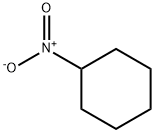

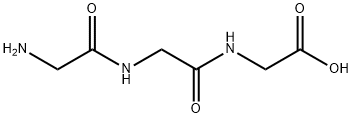


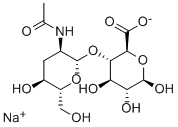
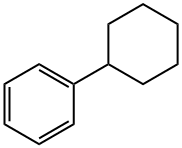
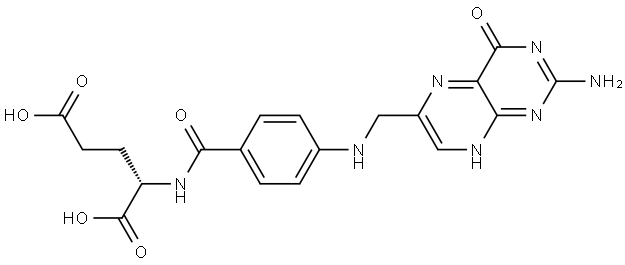
You may like
-
 Gabapentin 98%View Details
Gabapentin 98%View Details -
 GABAPENTIN 99%View Details
GABAPENTIN 99%View Details -
 Gabapentin 99%View Details
Gabapentin 99%View Details -
 Gabapentin 98%View Details
Gabapentin 98%View Details -
 Gabapentin 98%View Details
Gabapentin 98%View Details -
 Gabapentin hydrochloride 98%View Details
Gabapentin hydrochloride 98%View Details -
 60142-96-3 98%View Details
60142-96-3 98%View Details
60142-96-3 -
 Gabapentin 99%View Details
Gabapentin 99%View Details